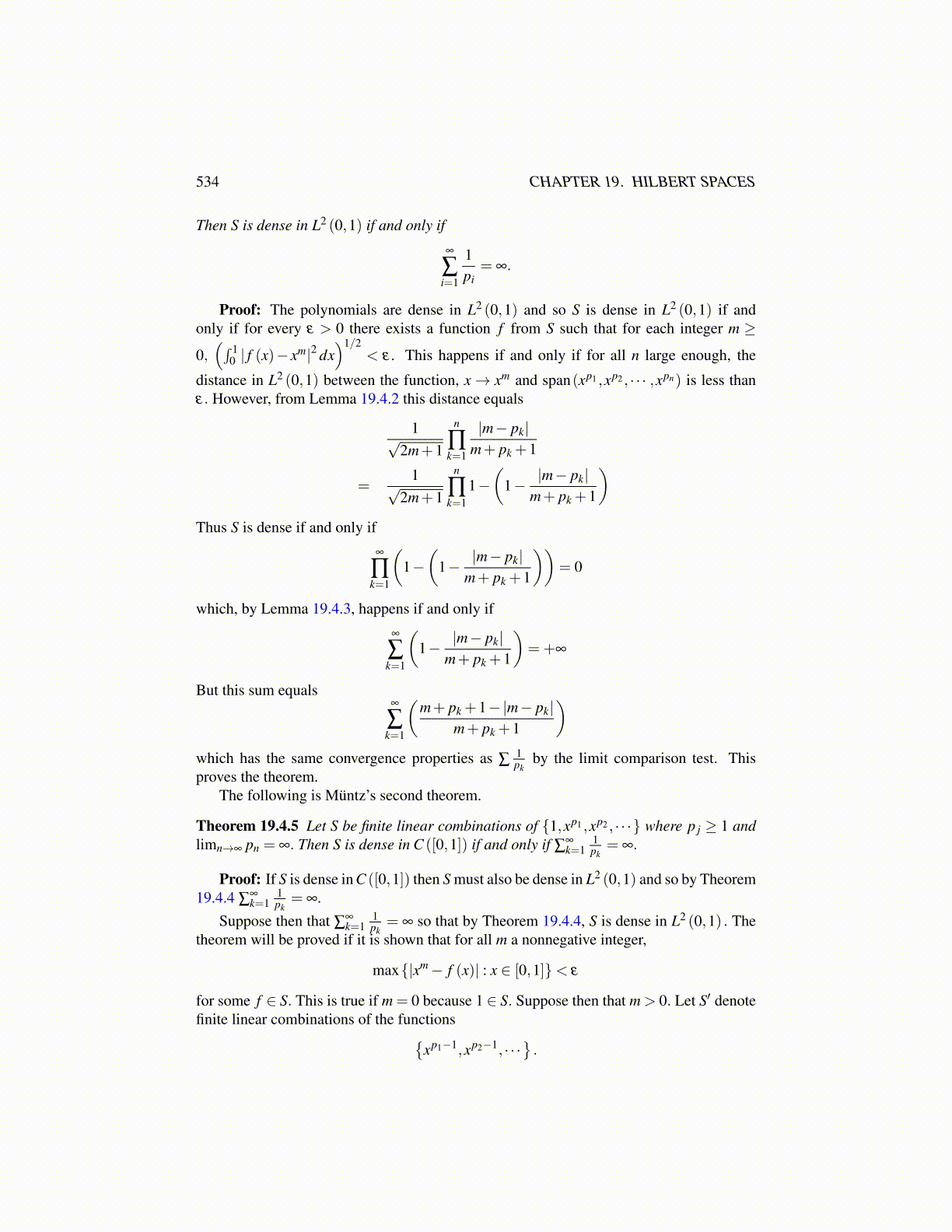
534 CHAPTER 19. HILBERT SPACES
Then S is dense in L2 (0,1) if and only if
∞
∑i=1
1pi
= ∞.
Proof: The polynomials are dense in L2 (0,1) and so S is dense in L2 (0,1) if andonly if for every ε > 0 there exists a function f from S such that for each integer m ≥
0,(∫ 1
0 | f (x)− xm|2 dx)1/2
< ε . This happens if and only if for all n large enough, the
distance in L2 (0,1) between the function, x→ xm and span(xp1 ,xp2 , · · · ,xpn) is less thanε. However, from Lemma 19.4.2 this distance equals
1√2m+1
n
∏k=1
|m− pk|m+ pk +1
=1√
2m+1
n
∏k=1
1−(
1− |m− pk|m+ pk +1
)Thus S is dense if and only if
∞
∏k=1
(1−(
1− |m− pk|m+ pk +1
))= 0
which, by Lemma 19.4.3, happens if and only if∞
∑k=1
(1− |m− pk|
m+ pk +1
)=+∞
But this sum equals∞
∑k=1
(m+ pk +1−|m− pk|
m+ pk +1
)which has the same convergence properties as ∑
1pk
by the limit comparison test. Thisproves the theorem.
The following is Müntz’s second theorem.
Theorem 19.4.5 Let S be finite linear combinations of {1,xp1 ,xp2 , · · ·} where p j ≥ 1 andlimn→∞ pn = ∞. Then S is dense in C ([0,1]) if and only if ∑
∞k=1
1pk
= ∞.
Proof: If S is dense in C ([0,1]) then S must also be dense in L2 (0,1) and so by Theorem19.4.4 ∑
∞k=1
1pk
= ∞.Suppose then that ∑
∞k=1
1pk
= ∞ so that by Theorem 19.4.4, S is dense in L2 (0,1) . Thetheorem will be proved if it is shown that for all m a nonnegative integer,
max{|xm− f (x)| : x ∈ [0,1]}< ε
for some f ∈ S. This is true if m = 0 because 1 ∈ S. Suppose then that m > 0. Let S′ denotefinite linear combinations of the functions{
xp1−1,xp2−1, · · ·}.